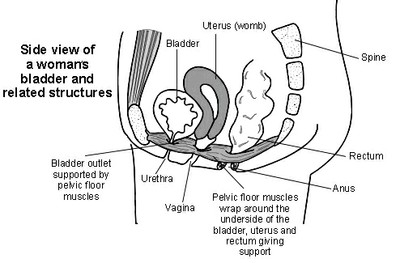The Pelvic Floor - do you know enough? [article]
Do you ever discuss incontinence with your clients?
If your client asked you about pelvic floor problems would you feel comfortable or knowledgeable enough to give advice?
The truth is that many women experience problems with their pelvic floor.
Statistics from the UK presented by Dr Chris Steele from The Family GP.com and the “This Morning” show a staggering percentage of women live with pelvic floor problems:
- 42% of women in the UK are sufferers
- 40% of women are too embarrassed to consult their doctor
- 33% of women suffer problems 5 years after childbirth
- On average women wait 5 years before consulting their doctor
You may be wondering what are the symptoms of pelvic floor problems, or how would I know if my clients had a problem?
Common symptoms are not being able to fully control the bladder or sometimes the rectum resulting in partial leakage of their contents. The following questions provide a guide to determining pelvic floor problems.
Do you ever have embarrassing incidents when you laugh, cough or sneeze?
- Are impact aerobics or trampolining a thing of the past?
- Do you find yourself desperately crossing your legs on the way to the bathroom?
- Do you always look for bathrooms wherever you go?
- Does a long journey fill you with dread?
If your clients answer ‘Yes’ to these questions, they may have pelvic floor problems. As you can understand, many women are too embarrassed to talk about it and many think it is something they have to live with as a normal consequence of having kids and getting older.
Men can also have pelvic floor problems. They are often associated with prostate problems but can be caused by weak pelvic floor muscles.
As fitness professionals you often have the opportunity to discuss health issues with clients. If you know about pelvic floor issues you are in a valuable position to improve your client’s quality of life by letting them know that they don’t have to put up with it.
By understanding what and where the pelvic floor is and how it supports your internal organs you will be able to assist them in finding the most appropriate solution. In some cases you will need to refer out to get specialist advice, but at least you will have helped them with the 1st step, awareness of the problem and that it can be fixed. In other cases you will be able to help with prescription and explanations of pelvic floor exercises and you will know which exercises to avoid to prevent making the condition worse.
Let’s take a look now at where these muscles are. For both males and females the pelvic floor runs from the pubic bone to the tail bone forming a hammock shaped layer of muscle. It creates a floor at the base of the pelvis that supports the internal organs. In women it allows for three openings, the vagina, urethra and rectum while in men it allows for the urethra and rectum.
FEMALE

MALE

You can see that in women the uterus is supported by the pelvic floor whereas in men the prostate gland is supported.
When the pelvic floor is strong it supports the bladder and bowel. It helps to close them off to prevent leakage and relaxes to let them empty when we go to the toilet.
If pelvic floor muscles are weakened the ability to hold a full bladder or hold wind is decreased, especially during exercise. When urine is leaked involuntarily in this way it is called Stress Incontinence.
In severe cases the ability to support the internal organs is decreased resulting in organs dropping down. This is known as a Prolapse. The prostate or uterus, vagina, bladder, and intestines can actually fall out. Not pretty and definitely not comfortable for anyone who has this condition.
PELVIC PROLAPSE

Pelvic floor muscles can be are weakened for many reasons. Childbirth, surgery, heavy lifting, being overweight, constipation and lack of regular exercise are among some of the common causes.
Exercises can help to prevent pelvic floor problems and in most cases exercises can be performed to correct weaknesses. It is also important to realise which exercises should be avoided as things like sit ups will be detrimental to anyone with pelvic floor weakness.
Now that we know why the Pelvic Floor is important, the next article will look at exercises to safely strengthen the pelvic floor and how you will know if you can help or if your client needs to see a specialist.
To further your understanding of the muscles that make up the pelvic floor check out the following tutorial on you tube.
http://www.youtube.com/watch?v=K7w0R4O3ctg&feature=email
